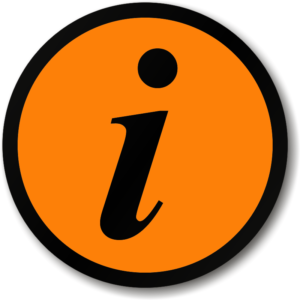The U.S. Copyright Office has ruled that AI-generated artwork cannot be copyrighted. Let’s talk about that. But first a little background.
What’s a Copyright

A copyright is a legal right that grants exclusive control over the use and distribution of an original creative work. It gives the creator or owner of the work the exclusive right to reproduce, distribute, display, perform and make derivative works based on the original creation.
Copyright protection covers a wide range of creative works, including literary works (such as books, articles, and poems), musical compositions, artistic works (such as paintings and sculptures), dramatic works, computer software, architectural design and audiovisual recordings.
Copyright protection arises automatically when an original work is created and fixed in a tangible form, such as writing it down, recording it, or saving it on a computer file. It provides the creator with a set of exclusive rights for a specific period, typically the lifetime of the creator plus an additional number of years—70 years in the U.S.—after their death. During this time, others generally need permission from the copyright holder to use, reproduce, or distribute the work.
Why Copyright is Important
Copyright is essential for fostering creativity, providing economic incentives for creators, protecting artistic integrity, and balancing the rights of creators and the public’s interest in accessing and using creative works. More specifically:
- Protection of creative works. Copyright provides legal protection for creators’ original works, ensuring that they have control over how their creations are used, distributed, and reproduced. This protection incentivizes creators to invest time, effort, and resources into producing new and innovative works, knowing that they will have exclusive rights over their creations.
- Encouragement of creativity and innovation. Copyright promotes creativity and innovation by providing creators with the opportunity to benefit financially from their works. The ability to control and profit from their creations encourages artists, authors, musicians, and other creators to continue producing new and original works, ultimately contributing to cultural and technological advancements.
- Economic value and livelihood. Copyright enables creators to monetize their works by granting them the exclusive rights to reproduce, distribute, and license their creations. This economic value allows creators to earn income from their works, supporting their livelihoods and providing an incentive for continued creativity.
- Preservation of artistic integrity. Copyright gives creators the power to protect the integrity of their works. They can prevent others from modifying or distorting their creations in ways that could damage their reputation or artistic vision. By maintaining control over their works, creators can ensure that their artistic intentions are respected and preserved.
- Public access and dissemination of knowledge. While copyright grants creators exclusive rights, they also strike a balance with the public’s interest in accessing and using copyrighted works. Copyright law includes provisions such as fair use that allow for limited use of copyrighted works without permission for purposes such as criticism, commentary, education, and research. These provisions enable the dissemination of knowledge, foster creativity, and facilitate the exchange of ideas.

What are the Issues with AI-generated Work?
Copyright protection for AI-generated work raises complex. Here are the key issues:
- Authorship and ownership. Determining the authorship and ownership of AI-generated works can be challenging. Traditional copyright law attributes authorship to human creators, but AI-generated works may lack a clear human creator. This raises questions about who should be considered the author and owner of the work. Is it the prompter, the programmer, the AI system itself, or the organization that owns or operates the AI system.
- Originality and creativity. Copyright protection requires the work to be original and created with a sufficient degree of creativity. AI algorithms generate works by learning from existing data and patterns, which raises concerns about whether AI-generated works can truly be considered original and creative. The involvement of AI challenges the traditional understanding of human creativity as a necessary condition for copyright protection.
- Public domain and fair use. AI systems can potentially create works that incorporate existing copyrighted material, raising questions about whether such works infringe upon existing copyrights. Determining the boundaries of fair use/fair dealing and the public domain becomes more complex when AI is involved in the creation process, as it may generate derivative works or use copyrighted content in ways that are difficult to assess under traditional copyright frameworks.
- Liability and accountability. If an AI system generates infringing or controversial content, it becomes challenging to assign liability and accountability. Traditional copyright law typically holds human creators responsible for infringement, but in the case of AI-generated works, it becomes less clear who should be held accountable for any legal violations.
What’s Next
Specific legislative action has thus far not been taken by Congress. However, it is likely that in the future, Congress may introduce bills or amend existing copyright laws to address the unique challenges posed by AI-generated works. These developments would involve balancing the interests of human creators, AI developers, and the public, while considering the ethical and economic implications of AI in creative fields.